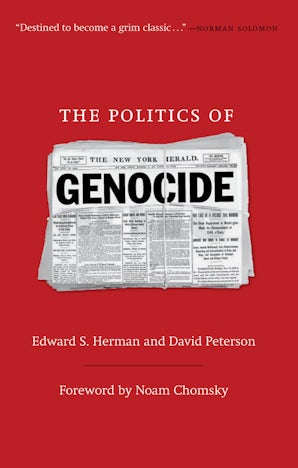Also in this issue
Books by David Peterson
The Politics of Genocide
by Edward S. Herman and David Peterson
Foreword by Noam Chomsky
Article by David Peterson
- The Propaganda Model Revisited
- Fake News on Russia and Other Official Enemies: The New York Times, 1917Ð2017
- Jeremiah Wright in the Propaganda System
- The Dismantling of Yugoslavia (Part I): A Study in 'In'humanitarian Intervention (and a Western Liberal-Left Intellectual and Moral Collapse)
- The Dismantling of Yugoslavia (Part II)
- The Dismantling of Yugoslavia (Part III)
- The Dismantling of Yugoslavia (Part IV)
- The Dismantling of Yugoslavia (Glossary and Timeline)
- Mergers, Concentration, and the Erosion of Democracy


